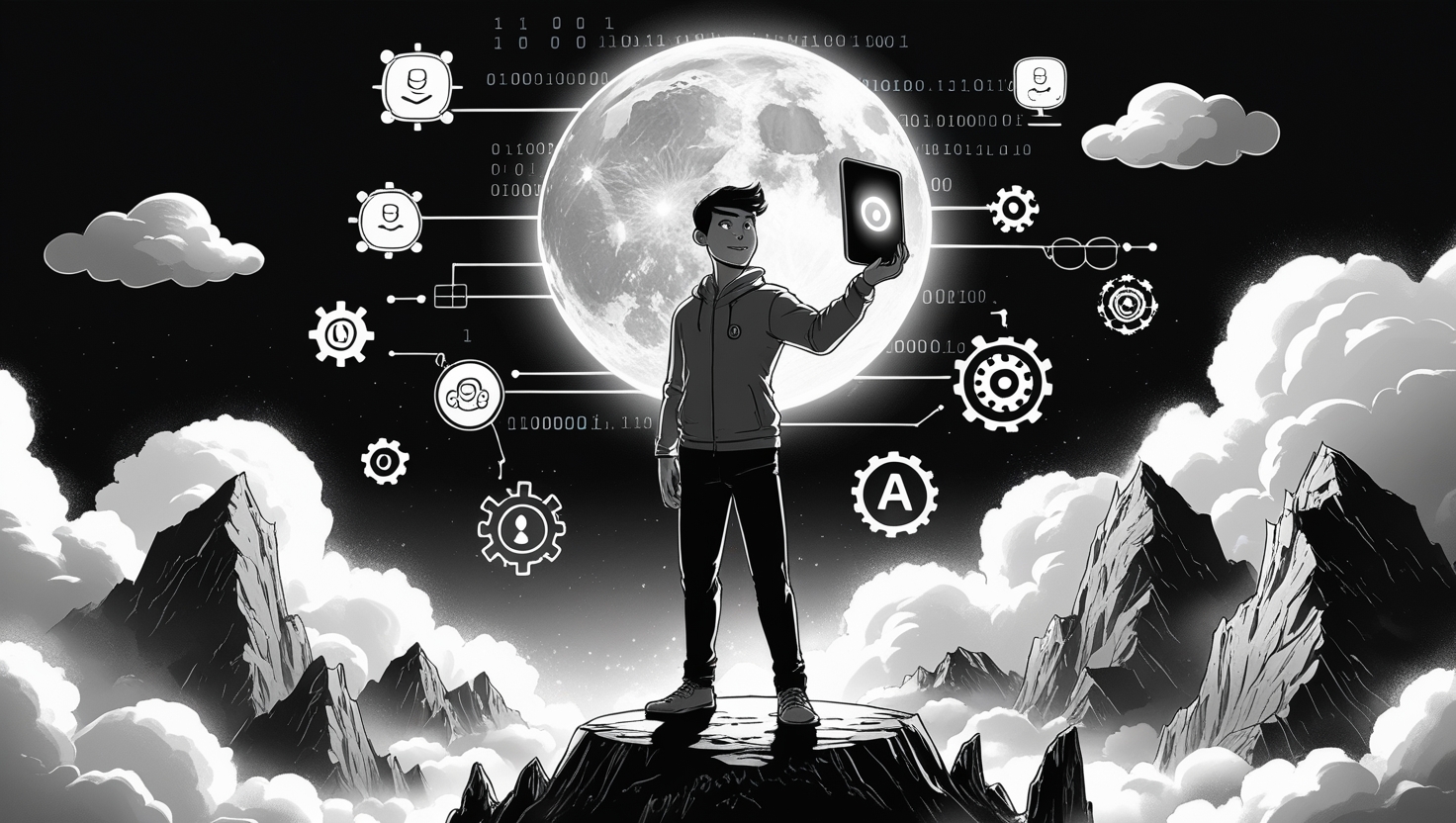Welcome to the exciting world of artificial intelligence, where innovation meets practicality and transforms industries before our very eyes. If you have ever wondered about the many examples of ai tools that are changing the game in education, healthcare, daily life, and beyond, then you’re in the right place. Today, we will explore ten groundbreaking AI solutions—including popular ones like ChatGPT, Jasper, DALL-E, and Midjourney—that not only fuel creativity and data analysis but also bring tangible benefits to sectors such as finance, medicine, and education. So, are you ready to dive into the revolution and see how these intelligent systems are shaping our future?
Before we proceed further, feel free to check out our related article on free ai tools for earning to learn more about how AI can even help you earn money in today’s digital economy. You can also visit the homepage of our site at Smarteconomix for additional insights and updates.

The Top 10 Instances of AI Tools Changing the Game
Artificial intelligence is no longer a futuristic concept but a practical solution that brings positive change across various sectors. Here, we’ll highlight ten exemplary tools that demonstrate the power and range of AI applications. These instances of artificial intelligence applications range from content creation and image design to data analysis and even specialized healthcare and finance applications.
Content Generation: ChatGPT and Jasper – AI Tools Revolution
Imagine a tool that can help you craft insightful articles, manage customer support, or even write creative stories effortlessly. ChatGPT and Jasper are two prime examples of advanced natural language processing systems that excel in content generation. They are often touted as innovative solutions for marketers, bloggers, and businesses seeking to produce high-quality written content with minimal time and effort. Not only do they save time, but they also offer a fresh perspective in content creation by adapting to the nuances of human language.
Designing Stunning Visuals: DALL-E and Midjourney – AI Tools Revolution
What if you could create striking art or design conceptual images in minutes, even without traditional artistic skills? AI-powered image generators like DALL-E and Midjourney have opened up new creative horizons. These tools analyze textual input and generate visuals that capture the imagination, making them ideal for advertising, social media, and even product design. Their growing popularity is a testament to the increasing synergy between technology and art—a combination that is redefining how we perceive visual content.
Data Insights and Analysis: Tableau and Power BI – AI Tools Revolution
Data is the new currency, and tools like Tableau and Power BI are essential for organizations that want to harness this wealth of information. Serving as robust analytical platforms, they transform raw numbers into insightful, interactive visualizations that guide strategic decisions. Their powerful integration capabilities make them valuable assets in industries that demand real-time data interpretation and forecasting. This spotlight on data underscores the far-reaching influence of examples of ai tools in making sense of everyday data challenges and opportunities.
Advanced Healthcare Solutions: IBM Watson – AI Tools Revolution
Within the realm of health and medicine, IBM Watson stands out as a revolutionary AI tool. Employed in clinical decision support, patient data management, and even drug discovery, Watson exemplifies how AI can enhance healthcare outcomes. By processing vast quantities of medical data, it assists doctors in diagnosing diseases with greater accuracy and offers tailored treatment suggestions. The implications for patient care and medical research are truly transformative.
Innovative Financial Analytics: Kensho
Kensho is another excellent case study when examining AI’s impact, this time in the financial sector. Banks and financial institutions use this AI-driven platform to evaluate market trends, perform risk analyses, and generate predictive investment models. Kensho’s capabilities demonstrate how sophisticated data analysis can support robust financial strategies and help organizations navigate modern economic landscapes with confidence.
Transforming Education: Coursera and Duolingo
Educational technology is rapidly evolving, and platforms like Coursera and Duolingo embody the future of learning. These tools leverage artificial intelligence to customize learning experiences, monitor progress, and even predict areas where students might need extra help. By personalizing education, AI is ensuring that learning remains engaging, accessible, and efficient. Such uses of examples of ai tools in education hold immense promise for both traditional educational institutions and self-directed learners worldwide.
Practical Applications of AI Tools in Different Industries
The above examples merely scratch the surface of AI’s capabilities. Let’s take a broader look at how these innovations are impacting various sectors in a real-world context. Whether you’re a student, a healthcare professional, or someone looking to streamline daily tasks, AI offers myriad opportunities for efficiency and enhanced creativity.
Exploring AI in Daily Life – AI Tools Revolution
Have you noticed how everyday tasks are becoming simpler with the help of intelligent tools? From voice-operated assistants on our smartphones to smart home devices that learn our schedules, the influence of artificial intelligence in daily life is undeniable. These practical implementations of AI, or more simply put, examples of ai tools in daily life, enable us to navigate tasks with augmented efficiency and minimal effort. Imagine a morning where your coffee maker, thermostat, and even your alarm clock are all in sync, thanks to AI. It truly feels like living in the future, doesn’t it?
AI Tools Enhancing Educational Experiences
Education has always been a cornerstone of progress, and AI is adding an exciting twist to the teaching and learning process. Through platforms such as Coursera and Duolingo, AI algorithms analyze learning patterns, provide personalized recommendations, and adapt instructional methods to suit individual student needs. These innovative approaches represent some of the most promising examples of ai tools in education, demonstrating how technology can bridge the gap between traditional learning systems and the needs of today’s digital generation. Have you ever thought about how your learning style could improve with a little help from AI?
AI Transforming Healthcare Practices – AI Tools Revolution
Healthcare, one of the most critical sectors, benefits greatly from specialized AI tools. IBM Watson’s prowess in managing patient data and assisting in clinical decisions is just one example. In hospitals, AI is being used to streamline administrative tasks, support surgical procedures, and even predict patient outcomes. These advancements, which serve as compelling examples of ai tools in healthcare, are not just making medical procedures more efficient—they are saving lives. Can you imagine a future where early diagnosis and tailored treatment plans become the norm, all thanks to AI?
AI Tools: A Glimpse into the Future – AI Tools Revolution
As the demand for high-end technology won’t abate, the potential for AI innovations appears limitless. We’re moving toward even more specialized tools that aren’t only tailored to specific industries but also more deeply integrated with the platforms we use every day. In the near future, you might notice that these AI solutions are even more deeply integrated into day-to-day workflows, virtual collaborations, and cross-industry innovations than they are currently.
One trend we can anticipate is the creation of industry-specific AI platforms that address particular professional issues. For instance, bespoke AI systems for legal research, tailored mental health counseling, or even personalized art generation tools that are adapted to individual creative styles. This revolution will be driven by increasingly sophisticated algorithms, deeper learning models, and improved human-machine interactions, paving the way for AI tools to become a vital component of every sphere of our existence.
A Quick Overview: AI Tools Comparison Table
| Category | Tool Name(s) | Primary Applications |
|---|---|---|
| Content Generation | ChatGPT, Jasper | Writing, Customer Support, Content Marketing |
| Image Design | DALL-E, Midjourney | Art Generation, Advertising, Creative Design |
| Data Analysis | Tableau, Power BI | Data Visualization, Business Intelligence, Forecasting |
| Healthcare | IBM Watson | Clinical Support, Patient Data Management, Drug Discovery |
| Finance | Kensho | Market Trend Analysis, Risk Management, Investment Modeling |
| Education | Coursera, Duolingo | Personalized Learning, Skill Development, Adaptive Testing |
This table presents a concise comparison of various tools and their applications, making it easier to appreciate how diverse and tailored examples of ai tools really are. Do you see any tools that could benefit your professional or personal life?

Future Trends and What They Mean for You – AI Tools Revolution
Going forward, the outlook for AI tools is very promising. More integration of these technologies into conventional systems is a virtual certainty. As machine learning and data processing advance further, AI tools in the coming years will likely provide even more intuitive and personalized experiences. As these intelligent apps grow increasingly ubiquitous, industries will enjoy greater operational efficiencies, reduced expenses, and unprecedented insights into consumer behavior and market trends.
Furthermore, AI development is also going to revolutionize human-machine collaboration. Rather than replacing human creativity, AI will persist in supplementing and strengthening our capabilities, ushering in an era where human imagination can be supplemented by intelligent systems. How do you envision the change in your role in a work environment where AI tools become frequent collaborators?
In conclusion, the AI revolution is not a hype but a dynamic evolution that is unlocking new opportunities in a variety of fields. Whether you are a student in need of personalized learning, a professional in need of data-backed insights, or an ordinary user looking to automate day-to-day tasks, the wide variety of ai tools above has something for you. As AI continues to evolve, its impact on our lives will only grow more profound, making it imperative for us to understand, adapt, and harness this incredible potential.
So, what do you think? Are you ready to embrace the potential of AI in your life and work? The future is here, and the revolution has already started. Stay curious, stay innovative, and never hesitate to harness the revolutionary power of these AI-powered tools.
FAQ about AI Tools Revolution
Where can I learn more about the latest developments in AI and its applications?
For further reading, you can visit reputable sources like IBM Watson and explore industry blogs such as Forbes Technology Council’s insights on AI trends and innovations. Additionally, be sure to check out our free ai tools for earning article for more practical advice on integrating AI into your daily workflow.
What future trends can we expect from the evolving landscape of AI tools?
We can expect the emergence of more specialized, industry-specific AI applications that will drive deep integration with existing platforms. This means more intuitive interfaces, improved predictive capabilities, and a stronger collaboration between humans and AI, ultimately transforming the way we work and live.
Can you share some examples of ai tools in daily life that I might be using right now?
Absolutely! Many of us interact with AI daily, whether it’s through voice assistants like Siri or Google Assistant, smart home devices that adjust lighting and temperature, or even recommendation systems on streaming platforms. These instances of AI work seamlessly in the background to streamline our routines and enhance convenience.
